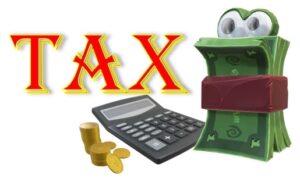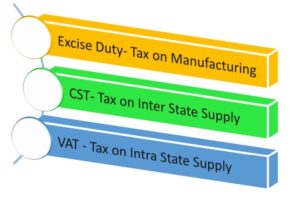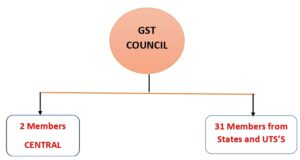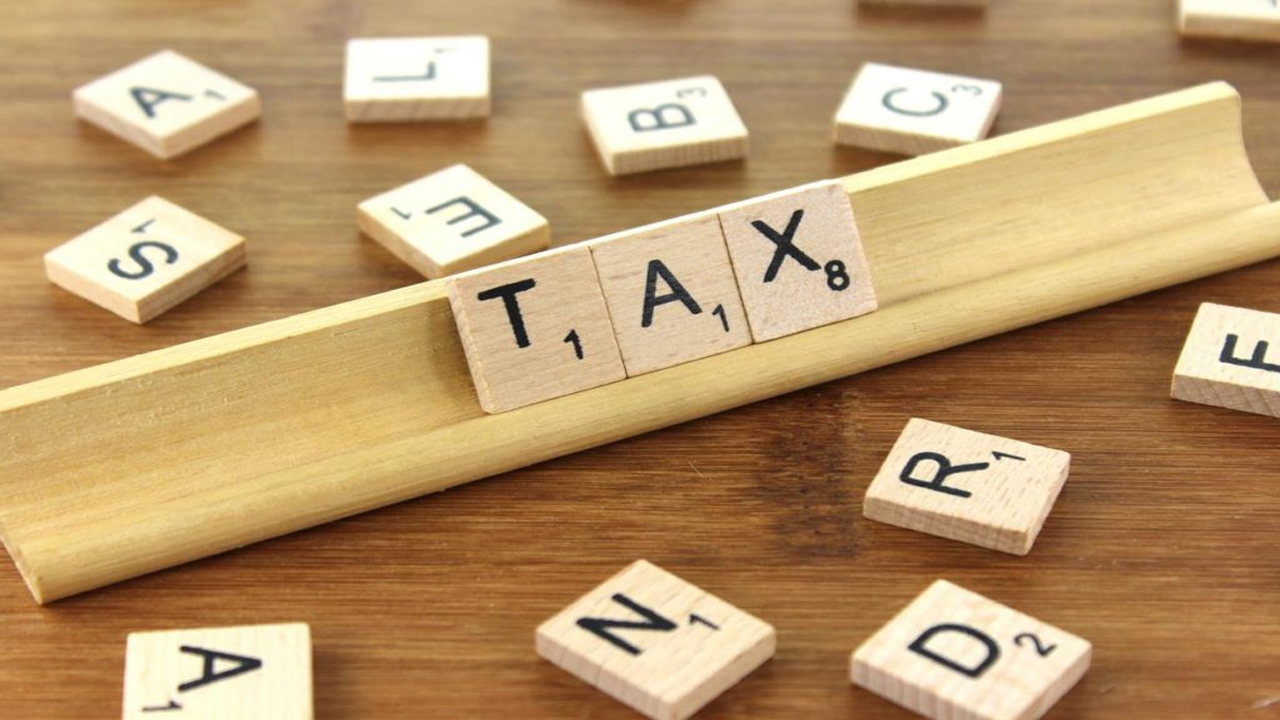INTRODUCTION TO GST
Before Introduction to GST , first of all we will discuss , where GST comes from. GST is a Tax. So before learning GST first of all we should know about Taxes.
TAX

Tax is a compulsory payment imposed by government on citizens . As for example , to run a house we need some source of Income and a Manager who manages all the funds. Similarly to run a country, we need a source of Income and a Manager. Here, Manager refers to ‘GOVERNMENT’ and Source of income/ revenue refers to ‘TAXES’. So, Tax refers to a compulsory payment imposed on the citizens by the Government.
Also Read – Agnipath army recruitment scheme 2022
TYPES OF TAX
DIRECT TAX
Here , the term itself describes its meaning – Direct + Tax i.e. tax which is directly borne by the person on whom it is levied. In other words Tax burden ( burden to pay ) and Tax liability ( Liability to deposit the tax to government ) , both lies on the same person .
- Direct tax is borne directly by the taxpayer , i.e. the person who earns income.
- In India, Direct taxes are progressive in nature which means high rate of taxes are levied on higher earnings.
- Example : Income tax, it is a tax collected by the government from the person who earns income.
INDIRECT TAX
Indirect tax refers to the tax in which Tax burden and Tax liability lies on different individuals . Also , under Indirect tax , Tax burden can shifted or shared . For example , A shopkeeper sells Pepsi whose cost is say Rs.10 , but government imposed a tax, say 50% of the cost . So , the price of Pepsi will now become Rs.15 ( 10 + 5 ) . Now , the burden of Rs.5 , which is the tax amount will be imposed on the customer . So , Shopkeeper will collect Rs.15 from the customer , out of which he will keep Rs.10 with himself and Rs. 5 , he will deposit to the government . This is the reason , it is called Indirect tax because Tax burden lies on the ultimate consumers of the product and the liability to pay i.e. liability to deposit lies on the seller . This tax is Proportional in nature, i.e. all the consumer equally bear the burden irrespective of their income and earnings. Eg: Goods and Services Tax.
Also Read – Environment performance index 2022
GST (GOODS AND SERVICE TAX)

GST is a Tax introduced by the government as on 1st July 2017 in India. Before GST there were variety of taxes levied on goods & services such as :
- Excise Duty – Tax on manufacturing

- Central Sales Tax – Tax on inter state supply
- Value Added Tax – Tax on value addition
- Service Tax – Tax on service
These different types of taxes create many problems such as cascading effect , double taxation for government as well as for tax payer. So, GST has been introduced to submerge all these taxes into one.
Their collection procedure, different registration management, different invoices used to create burden on both taxpayer as well as tax collector.
Hence, to overcome from these types of problems government has introduced one tax, i.e. GST.
GST is having the moto of “One Nation One Tax”.
Also Read – Government budget concepts

GST IN INDIA
GST is a path breaking reform which has consumed all other indirect taxes & has dismantled inter-state trade barriers.
| YEAR | EVENT |
| 1954 | France was the first country to implement GST in year 1954. |
| 2004 | The idea of GST has been introduced by Kelkar task force in India. |
| 2014 | NDA government tables the constitution(122 Amendment Bill). |
| 2016 | The bill has been approved by the president& become constitution act 2016. |
| 2017(MARCH) | The CGST bill, IGST bill, UTGST bill, SGST bill was introduced in Lok Sabha. |
| 2017(JULY) | Finally Parliament passed GST bill by 1st July 2017 by achieving consensus on all the issues relating thereto. |
GST COUNCIL
GST Council is a governing body having 33 members in total.
The bifurcation of them are as follows:-
- 2 members are from Centre.
- 31 members are from 28 States and 3 Union Territories with legislation.

The Council contains following members:-
- Union Finance Minister (as chairperson)
- Union Minister of States in charge of revenue or finance (as member)
- The Ministers of state in charge of finance or taxation or other ministers of states as nominated by each states government (as members)
GST Council is an apex body which regulates, controls & modifies any law and regulation based on GST in India. The council is headed by Union Finance Minister assisted with finance ministers of all states. The GST Council is responsible for all Rules ,Rates Laws their modification revision, amendments regarding GST in India.
GOODS & SERVICES NETWORK
GSTN is a company registered u/s 8 of Companies Act 2013. It is a “Not for Profit” Company . Both the government provides funding to GSTIN.
GSTIN provides GST portal services to Government & tax payer.
Facilities provide of GSTN/ GST portal re as follows:
- Registration
- Filling of return
- Distribution of GST between CG&SG
- Marking of return
- Analysis Tax payer’s profits and provide various kinds of reports to government.
WEBSITE LINK : https://www.gst.gov.in/
CHARACTERISTICS OF GST IN INDIA
- It is one tax apply on both goods & services.
- It avoids cascading effect of taxes i.e. (tax on tax)
- It avoids problems of registration.
- It also avoids the problems of double taxation
- It also avoids the problems of multiple taxes.
4 PILLARS OF GST IN INDIA
| Earlier Regime | GST Regime |
| Multiple taxes | One Nation, One Tax, One Law |
| Multiple procedure | One procedure |
| Multiple procedure | One procedure |
| Cascading effect | No cascading effect( up to 99% ) |
| Double taxation | No double Taxations |
GST IS LEVIED ON BOTH GOODS AND SERVICES
So, lets understand, what does goods & services means.
GOODS
GOODS, here means every kind of movable property. It includes all types of actionable claims growing crops grass things attached to property which can be served after removal without its damage and wastage.
Eg: Cell phones, clothes, furniture, computers etc.
SERVICES
It means anything other than goods i.e. all intangible things which can directly consumed by the receiver which cannot be seen but its presence can be felt.
Eg: Teaching services, Professional services etc.
Note: GST does not cover money & securities in the definitions of goods and services.
But, conversion of its form i.e. conversions of cash into cheque or DD includes conversion services which is covered under GST.
Conversion of currency of one nation to other nation also involves conversion charges which are covered under the definition of services.
GOODS KEPT OUTSIDE THE GST
- Alcohol for human consumption (i.e., not for commercial use).
- Petrol and petroleum products (GST will apply at a later date), i.e., petroleum crude, high -speed diesel, motor spirit (petrol), natural gas, aviation turbine fuel.
TYPES OF GST IN INDIA

- CGST (Central Goods & Service Tax)- CGST is charged on Intra state Supply .
- SGST (State Goods & Service Tax)- SGST is charged on Intra State Supply.
- IGST (Integrate Goods & Services Tax)- IGST is charged on Inter State Supply.
- UTGST (Union Territory Goods & Service Tax)- UTGST is charged when supply is made to or from any Union Territory.
Goods & Services Tax has been imposed on the basis of supply of goods & services within state, among states or among nation.
Here supply means purchase & sales of goods & services & GST is imposed on both purchase & sales made.
